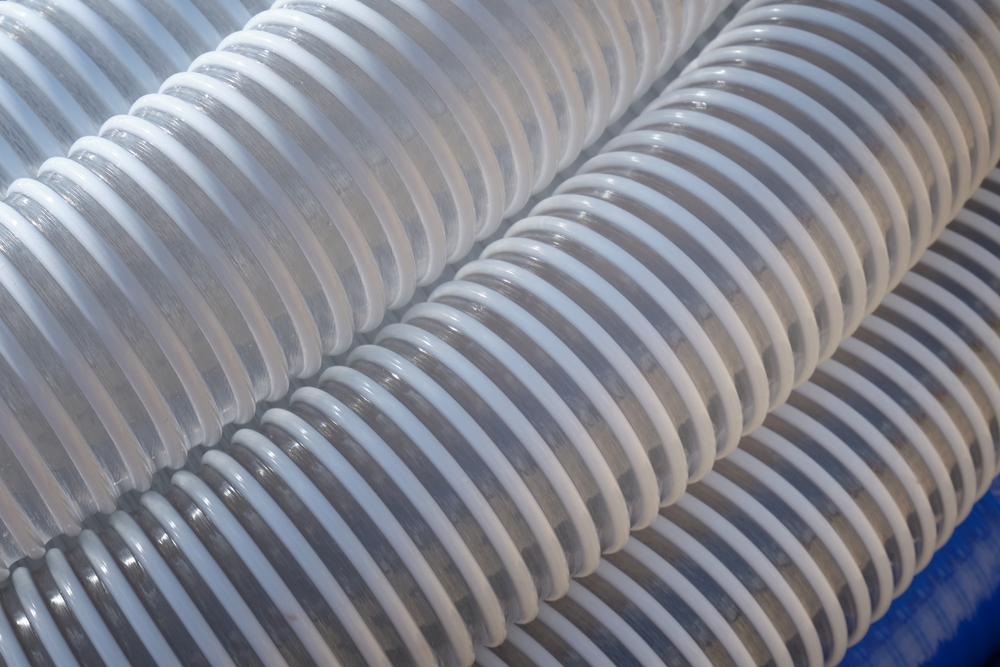
Top Features to Look for in a Pneumatic Hose
When it comes to choosing the right pneumatic hose, understanding the features that directly impact performance, durability, and efficiency is essential. Whether you’re an industrial professional or a DIY enthusiast, selecting the right hose can significantly affect the quality of your work and the longevity of your pneumatic tools. In this comprehensive pneumatic hose buying guide, we’ll break down the best pneumatic hose features to look for, helping you make an informed decision.
Material Quality and Construction
One of the most critical aspects of any pneumatic hose is the material it’s made from. The choice of material affects flexibility, strength, temperature resistance, and overall lifespan. Common materials include rubber, polyurethane, PVC, and hybrid blends, each with its unique strengths. Rubber hoses are known for their durability and flexibility, even in cold temperatures, making them a popular choice for heavy-duty applications. Polyurethane hoses, on the other hand, are lightweight and highly resistant to kinking, making them perfect for situations where maneuverability is key.
PVC hoses are generally the most affordable but tend to be less flexible and prone to cracking over time, especially in extreme weather conditions. Hybrid hoses combine the benefits of rubber and polyurethane, offering both durability and ease of handling. When selecting a hose, pay attention to the wall thickness and reinforcement layers, as these directly influence the hose’s ability to withstand pressure and abrasions. For industrial environments, opting for a hose with braided reinforcement can provide additional strength and ensure consistent airflow under demanding conditions.
The hose’s ability to resist oil, chemicals, and UV rays should also be considered, particularly if you’re working outdoors or around harsh substances. Choosing the right material ensures optimal performance and extends the life of your pneumatic system, making this one of the best pneumatic hose features to prioritize.
Hose Diameter, Length, and Airflow Efficiency
The diameter and length of your pneumatic hose play a critical role in determining how efficiently your tools operate. A larger diameter allows for better airflow, which is essential for high-demand tools like impact wrenches or spray guns. Common internal diameters include 1/4″, 3/8″, and 1/2″, and selecting the right size depends on the specific air requirements of your tools. For example, a 1/4″ hose works well for smaller air tools, while 3/8″ or larger diameters are better suited for heavy-duty applications that require more air volume.
Length is equally important. While longer hoses offer greater flexibility and reach, they can reduce airflow and pressure due to friction losses inside the hose. If your compressor is far from the work area, a longer hose may be necessary, but be mindful of the potential performance trade-off. To optimize efficiency, match the hose length and diameter with your compressor’s capacity and the demands of your tools.
An often-overlooked factor is the hose’s internal surface smoothness. A smoother interior reduces airflow resistance, helping maintain consistent pressure. By selecting a hose that balances length, diameter, and efficiency, you can significantly improve tool performance and overall productivity, making these specifications a vital part of any pneumatic hose buying guide.
Flexibility, Kink Resistance, and Handling
Handling is a crucial factor when choosing a pneumatic hose, especially if your work requires frequent movement or operation in tight spaces. Flexibility determines how easily you can maneuver the hose around obstacles and corners without straining or damaging it. Rubber and polyurethane hoses are generally more flexible than PVC hoses, particularly in colder environments where some materials tend to stiffen.
Kink resistance is another essential feature to consider. A hose that kinks easily can restrict airflow, reducing tool performance and causing unnecessary wear. Polyurethane hoses, known for their spring-like structure, naturally resist kinking, while hybrid hoses offer a balanced combination of flexibility and durability. Additionally, selecting a hose with reinforced construction can help prevent flattening or twisting under pressure, extending its lifespan.
Weight also impacts handling. Lightweight hoses reduce operator fatigue and are ideal for overhead applications or long-duration tasks. Some manufacturers design hoses with ergonomic grips and bend restrictors at the ends to enhance handling and prevent premature wear near the fittings. Choosing a hose that prioritizes flexibility and kink resistance ensures smooth, uninterrupted operation, making it one of the best pneumatic hose features for professionals and hobbyists alike.
Temperature and Pressure Ratings
Operating conditions play a significant role in determining the right pneumatic hose for your needs. High-pressure tools and extreme temperature environments require hoses designed to handle specific performance thresholds safely. Always check the maximum working pressure rating of the hose and ensure it matches or exceeds your compressor’s output and the demands of your tools. Underrated hoses can burst under high pressure, posing safety risks and damaging your equipment.
Temperature ratings are equally important. In cold environments, hoses made from PVC may stiffen and crack, while rubber or hybrid hoses maintain their flexibility. Conversely, in high-heat conditions, polyurethane hoses perform exceptionally well due to their resistance to temperature-related degradation. If your work involves exposure to chemicals, oils, or UV rays, opt for hoses designed with protective coatings or special compounds that resist corrosion and surface damage.
Selecting a pneumatic hose with appropriate pressure and temperature ratings ensures consistent performance and prevents costly downtime. By carefully matching the hose’s capabilities to your operating environment, you can maximize safety, efficiency, and durability, which is an essential consideration in any comprehensive pneumatic hose buying guide.
Fittings, Connectors, and Overall Compatibility
The final piece of the puzzle when choosing the right pneumatic hose lies in the fittings and connectors. Even the highest-quality hose will underperform without reliable, properly sized fittings that ensure airtight seals. Brass, stainless steel, and anodized aluminum fittings are the most common, offering durability and resistance to corrosion. Quick-connect couplers provide convenience by allowing you to switch tools quickly without depressurizing the system, saving time and improving workflow.
Compatibility with your compressor and air tools is critical. Ensure that the fittings’ size matches the hose diameter and that the threading type aligns with your equipment specifications. Some hoses come pre-fitted with universal connectors, while others require separate purchases for custom setups. Additionally, features like swivel fittings can reduce twisting and improve maneuverability during operation, preventing wear on both the hose and the fittings.
Finally, consider investing in a hose with protective bend restrictors and strain relief designs at connection points. These features help minimize stress on the fittings and prevent premature failure. By focusing on compatibility and choosing high-quality fittings, you ensure efficient airflow, reduced leaks, and long-term reliability—making this one of the best pneumatic hose features to prioritize.
Conclusion
Selecting the right pneumatic hose involves more than simply picking one off the shelf. It requires a careful evaluation of material quality, diameter, length, flexibility, pressure tolerance, and compatibility to ensure the best possible performance. A well-chosen hose not only enhances the efficiency of your pneumatic tools but also improves safety and reduces maintenance costs over time.
By using this comprehensive pneumatic hose buying guide, you can confidently identify the best pneumatic hose features that match your specific needs, whether for industrial use, automotive repairs, or home workshops. Investing in the right hose now ensures reliable performance, longevity, and seamless operation across all your pneumatic systems.
Royal Brass Incorporated
Welcome Royal Brass Incorporated! We are your 3rd generation, family-owned, local hose supplier! Our family has dedicated our services to supplying northern California with all types of hoses, fittings, flanges, regulators, valves, adapters, and gauges. We pride ourselves on having the most extensive inventory in northern California. Our inventory ensures that we can fix most products on site, the same day. Here at Royal Brass Incorporated, we only hire qualified individuals who are trained in factory sales. Our fully stocked warehouses ensure that we can fill your hydraulic and pneumatic hose, tubing, and fitting needs on time, every time. High-quality customer service is our goal and has been since 1952. Stop by or contact us today!
Categorised in: Pneumatic Systems





